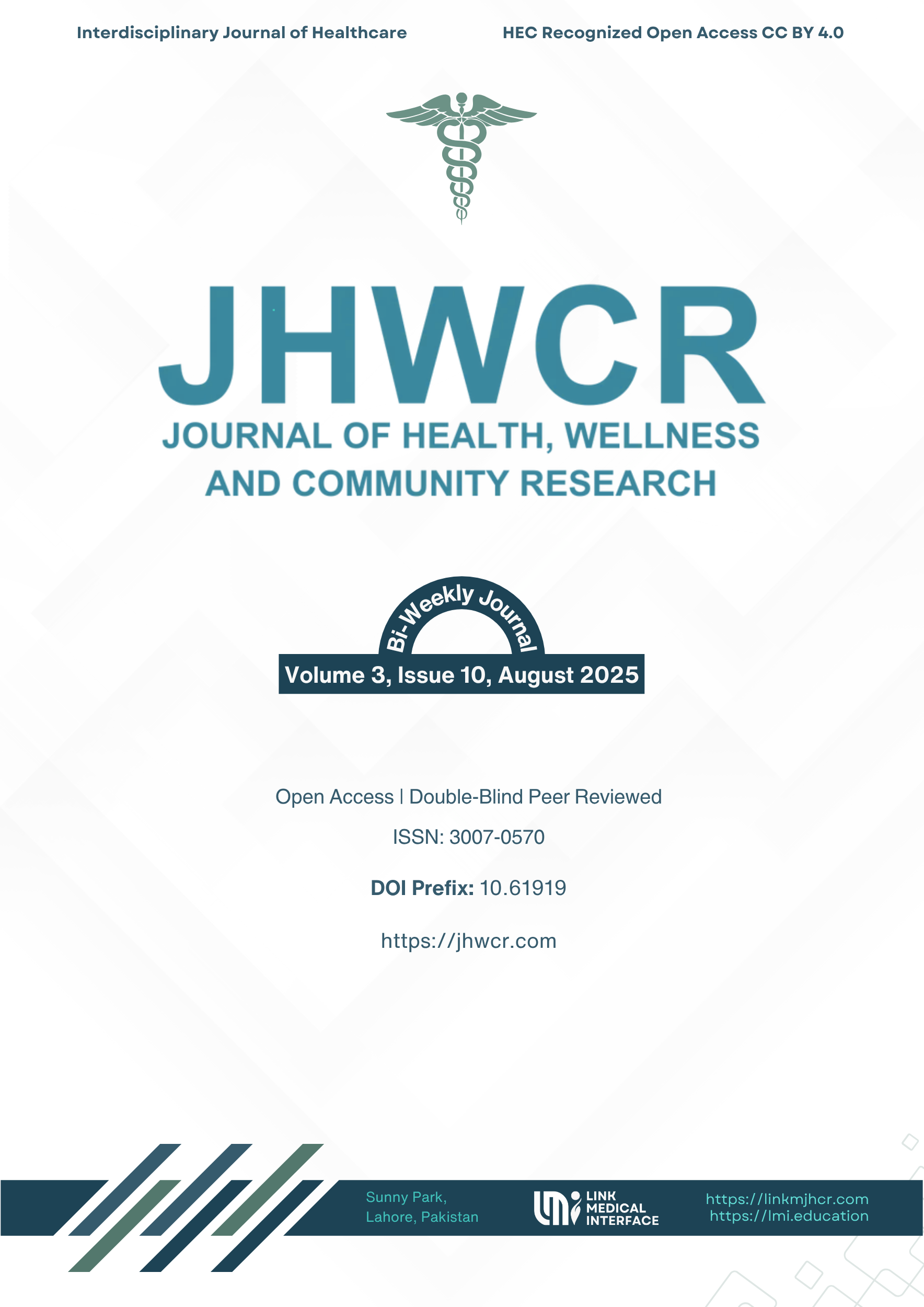Effect of Ischemic Pressure with Passive Stretching versus Dynamic Cupping in Alleviating Neck and Upper Back Pain Due to Myofascial Trigger Points in the Upper Trapezius of Computer Users
DOI:
https://doi.org/10.61919/xhapv073Keywords:
Myofascial trigger points, dynamic cupping, ischemic compression, passive stretching, upper trapezius, NPRS, McGill Pain Questionnaire, cervical range of motion, physiotherapy, computer usersAbstract
Background: Neck and upper back pain are increasingly prevalent among computer users due to prolonged static postures and ergonomic strain, with myofascial trigger points (MTrPs) in the upper trapezius being a common underlying cause. Non-invasive physiotherapy techniques such as dynamic cupping and ischemic compression with passive stretching have demonstrated clinical efficacy, yet direct comparative evidence in occupational cohorts remains limited. Objective: To compare the effectiveness of dynamic cupping therapy and ischemic compression combined with passive stretching in reducing pain, improving cervical range of motion, and decreasing the number of palpable MTrPs in male computer users. Methods: A quasi-experimental study was conducted among 40 male participants aged 20–40 years with confirmed trapezius MTrPs. Participants were conveniently allocated into two groups (n=20 each): Group A received dynamic cupping, and Group B received ischemic compression with passive stretching. Both groups received four sessions over two weeks. Outcome measures included the Numeric Pain Rating Scale (NPRS), McGill Pain Questionnaire, cervical extension and side flexion via goniometry, and trigger point palpation. Independent t-tests and within-group comparisons were conducted using SPSS v21, with p<0.05 considered statistically significant. Results: Both groups demonstrated significant within-group improvements in NPRS, McGill scores, cervical mobility, and trigger point reduction (all p<0.001). However, no statistically significant differences were found between groups post-intervention (p>0.32 for all outcomes), and effect sizes were negligible (Cohen’s d < 0.2), indicating comparable clinical efficacy. Conclusion: Dynamic cupping and ischemic compression with passive stretching are equally effective in managing MTrP related neck and upper back pain among computer users. Either technique may be selected based on clinical setting, therapist preference, or patient comfort, offering flexible, evidence-based options for myofascial pain management.
Downloads
Published
Issue
Section
License
Copyright (c) 2025 Awais Bin Inam, Muhammad Danish, Muhammad Hasaan, Iqra Nawaz, Emaan Asif, Farrukh Tariq, Mahum Imran, Farah Ishaq (Author)

This work is licensed under a Creative Commons Attribution 4.0 International License.


